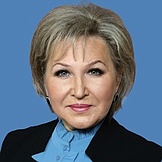Regional flags and emblems


Profile
Established 5 July 1944
Capital Veliky Novgorod
The Novgorod Region is part of the Northwestern Federal District
Area 54,500 sq km
Population 566 700 (2025)
Ethnic groups
(2020 National Census, %)
Russian – 95,43
Other – 4,57
Administrative division (2024)
Municipal areas − 13
Municipal districts – 8
City districts − 1
Rural towns − 14
Rural districts − 58
Geography and climate
The Novgorod Region is located in the north-west of the East European Plain. Configuration of the terrain: a hilly plain. The Valdai elevation (296 m) lies in the region’s south-east.
The area stretches 250 km north to south and 385 km east to west.
The region borders on the Pskov, Leningrad, Vologda and Tver regions.
The main rivers are the Volkhov, the Lovat, the Shelon and the Polost.
The largest lake is Lake Ilmen, which is 35 km wide and 48 km long. The average bank length is 176 km. The deepest lake is Lake Valdaiskoye, which reaches the depths of 55m–60 m. Swamps cover up to 15 % of the total land area.
The climate is temperate continental. January temperatures average −4°C and July temperatures average 19,4°C. Precipitation averages 56 mm in January and 136 mm in July. The growing season lasts between 120 and 130 days. Vegetation: coniferous and temperate forests.
Soils: sod-podzol, wetland.
The region has the Rdeisky State Nature Reserve and Valday National Park.
Government
The legislative branch is represented by the Novgorod Region Duma, which is the permanent, representative and only body of legislative authority in the region.
The Novgorod Region Duma has 32 deputies elected for five years, with 20 of them running in single-member constituencies and the other 12 in the single electoral district, where winners are identified in proportion to the number of votes cast for lists of candidates nominated by electoral associations.
The current Novgorod Region Duma was elected in September 2021. Its term expires in September 2026.
The system of executive bodies in the Novgorod Region includes the Governor of the Novgorod Region, the Government of the Novgorod Region, and other executive bodies of the region. The Government of the Novgorod Region is the permanent supreme collegial body of executive power of the region, formed by the Governor of the Novgorod Region.
The Governor of the Novgorod Region is the region’s highest-ranking official, who heads the Government of the region, runs the executive branch in the region and determines the structure of the executive bodies of the Novgorod Region. The Governor elected for five years by Russian citizens who permanently reside in the region. The Acting Governor will remain in office until an elected Governor of the Novgorod Region assumes office.
Economy and natural resources
The Novgorod Region’s advantageous location means it is located close to Russia’s largest cities and economic centers – Moscow and St Petersburg. Principal railways, motorways and pipelines cross the region.
Industrial output accounts for about 40% of the regional GDP. The Novgorod Region specialises in the chemical, food, wood processing and pulp-and-paper industries. Other well-developed areas of production include machine building, the porcelain and faience industry and the manufacturing of refractory materials for the ferrous metals industry and instrument making. The list of the region’s largest enterprises includes the Experimental Chemical Plant, Acron Group, Chudovoagrokhimservis, Novgorod Metallurgical Plant, Borovichi Refractories Plant, Avtospetsoborudovaniye and many others.
Agriculture accounts for over 8% of the regional GDP. Dominant segments include dairy and meat farming, pig and poultry farming, and production of grain, vegetables and potatoes. Flax cultivation is another promising area.
Long-haul transportation and tourism are important for the region’s economy.
In recent years, the Novgorod Region has continued its positive trends of improving key economic and social development indicators, including as reflected by the growing regional GDP, production, retail trade and peoples’ real incomes.
The region is dotted with non-metallic mineral deposits. Deposits of refractory clays, limestones, quartz sands, mineral pigments, peat, deposits of sapropel and deposits of fresh groundwater have been explored and can serve industrial needs. The region is rich in mineral and radon springs, and therapeutic muds.
Culture and tourism
Thousands of tourists from all over the world come to the Novgorod Region to admire its inimitable heritage sites. The oldest and most valuable landmarks included in the UNESCO World Heritage List are the 12th –19th-century cultural layer and ensemble of the St Anthony Monastery, the 11th-19th-century Kremlin, the 12th –19th-century St George Monastery, Yaroslav’s Court of the 12th–18th centuries; or a total of 37 ensembles and monuments on the Sofia and the Market side and in the suburbs of Veliky Novgorod.
The state ensures the preservation of the following historical towns with monuments of architecture, natural sites and ancient cultural layers: Veliky Novgorod, Borovichi, Valdai, Malaya Vishera, Soltsy, Staraya Russa, Kholm and Chudovo. Demyansk, Volok, Kresttsy, Kulotino, Konchansko-Suvorovskoye, Lyubytino, Medved, Moshenskoe, Opechensky Posad, Peredki, and Yazhelbitsy have retained their historical appearance.
Among the most significant cultural heritage sites are the Vitoslavlitsy Museum of Wooden Architecture, the Iversky Monastery in the Valdai District, travel palaces in the village of Korostyn in the Shimsk District and in the villages of Yedrovo and Yazhelbitsy in the Valdai District, the house museums of Fyodor Dostoyevsky in Staraya Russa, Nikolai Nekrasov and Gleb Uspensky in Chudovo, Russian 17th-century general Alexander Suvorov’s estate in the village of Konchansko-Suvorovskoye in the Borovichi District. Many of the monuments in Veliky Novgorod, Borovichi, Valdai and Staraya Russa are managed by the Novgorod State Unified Museum Reserve, a federal culture agency. The museum reserve was included in the list of cultural heritage properties of special significance for the peoples of the Russian Federation.


